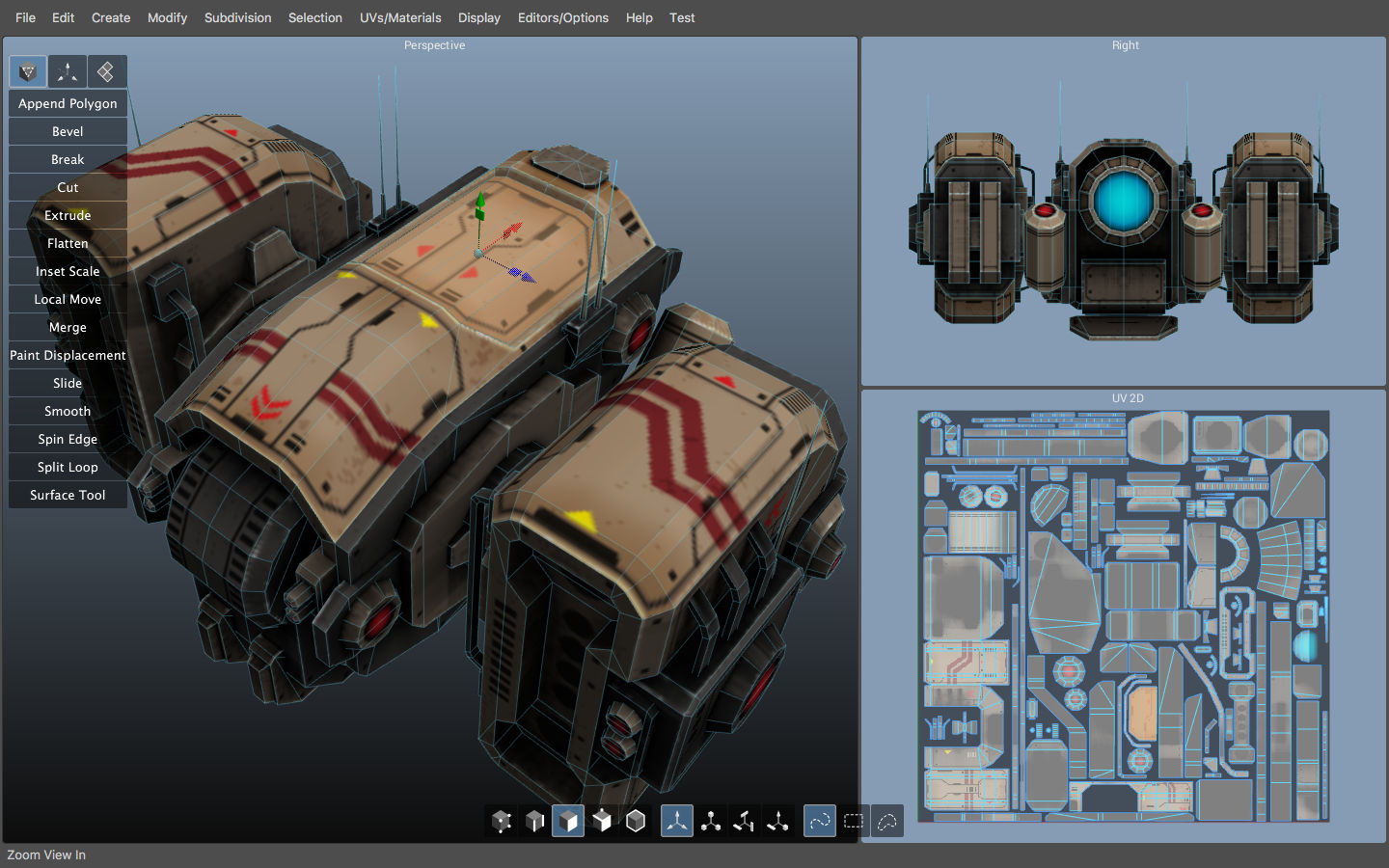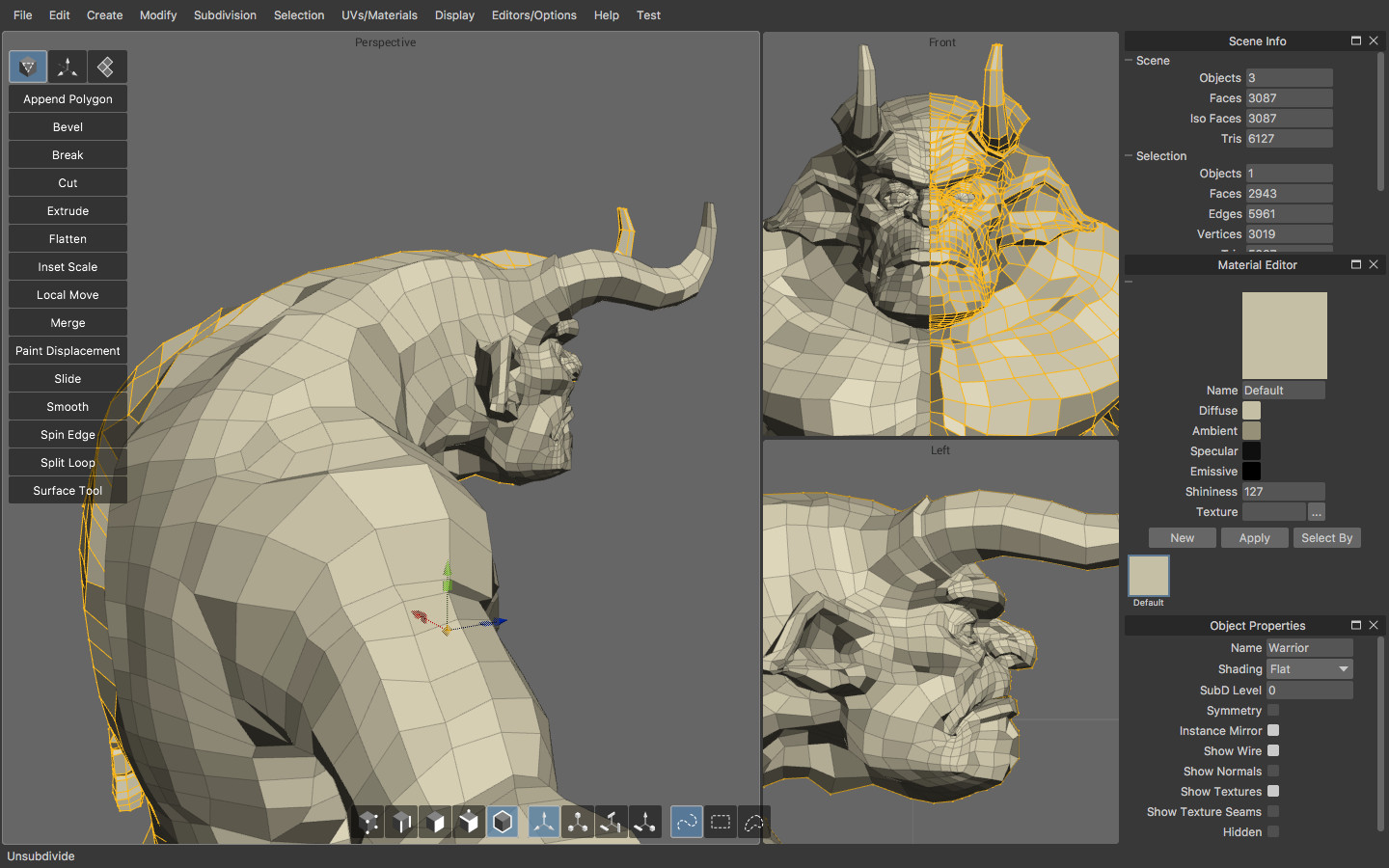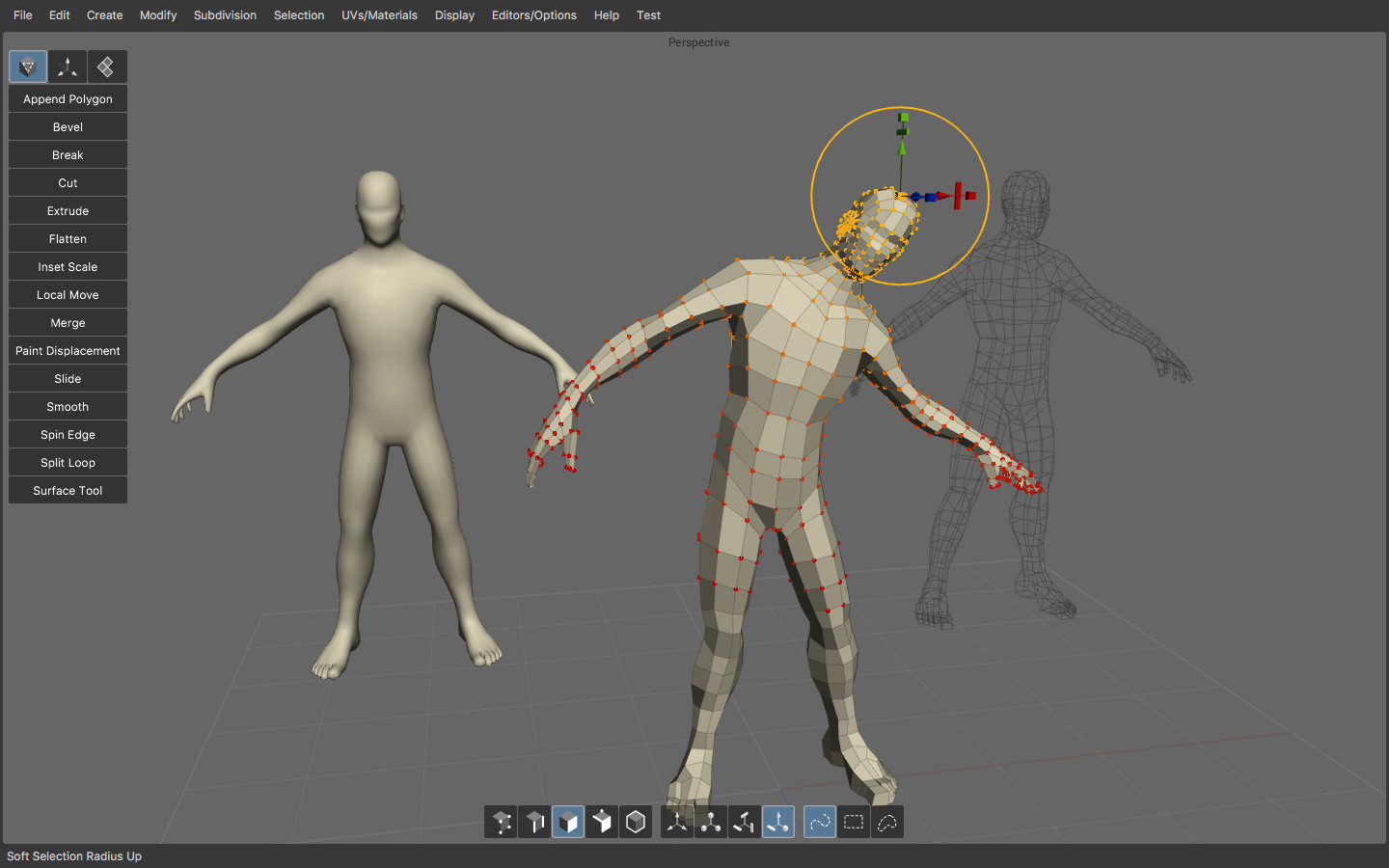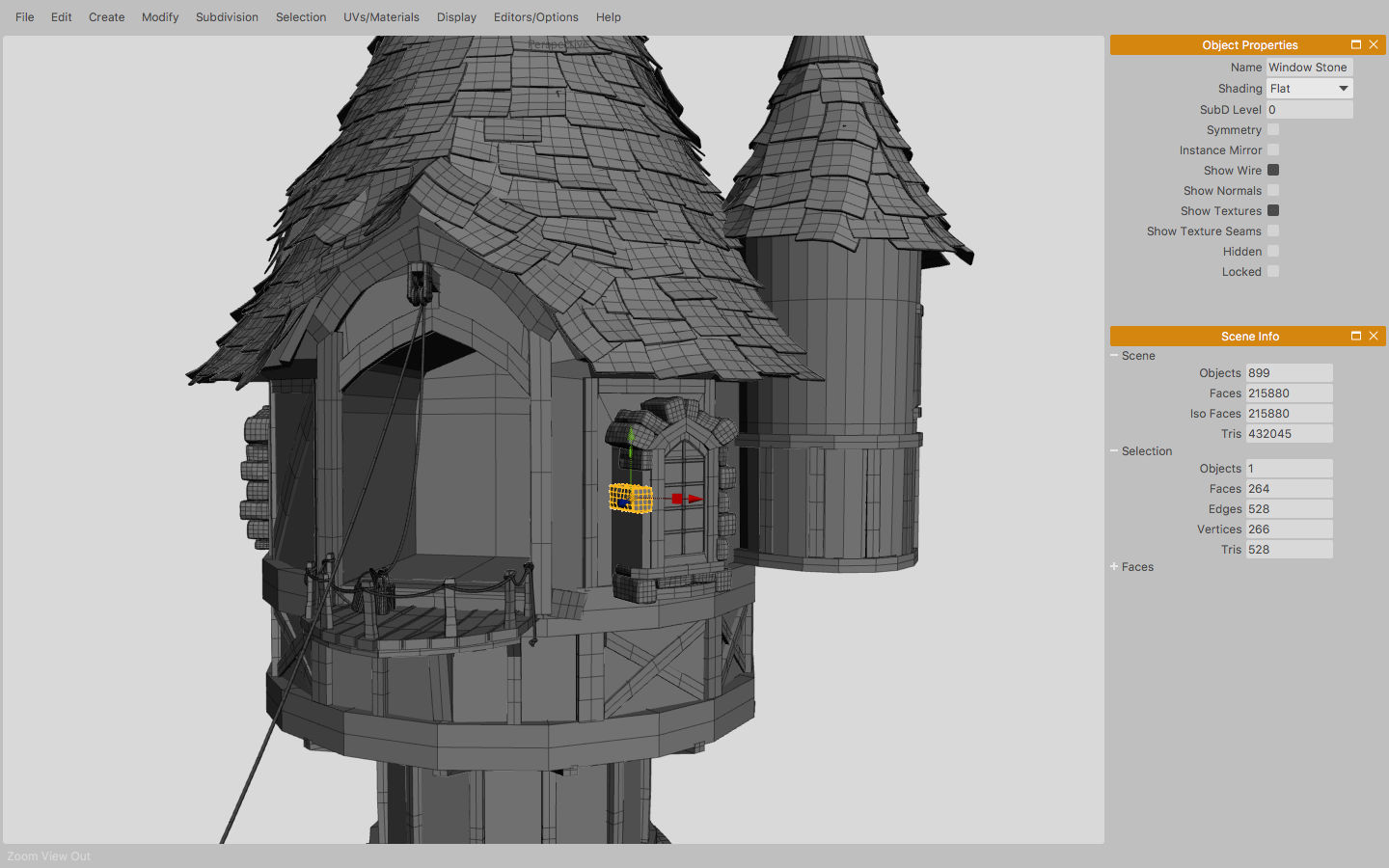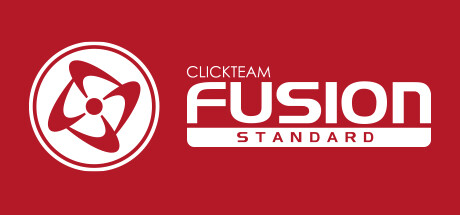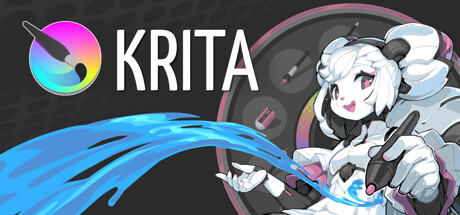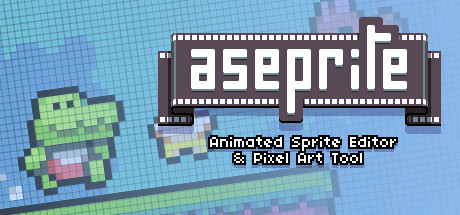
Разработчик: Nevercenter Ltd. Co.
Описание
Silo is a focused and lightning-fast standalone 3D modeler. Its deep modeling and UV mapping toolset has made it a favorite of pros for making game assets, movie characters, and objects for 3D printing. It’s a huge upgrade over the modeling tools of bloated all-in-one packages, and works hand-in-hand with industry standards like Maya, Blender, and ZBrush, and game engines like Unity and Unreal.
Advanced context-sensitive tools reduce the number of keys required to work fast, and sticky keys let you hop into and out of tools on the fly. From Spin Edge to advanced mirroring to LSCM UV Unwrapping, Silo has the tools pros request most. All accessible via a 100% customizable mouse.
Silo is currently being used at top studios worldwide as both a stand-alone design tool and as a versatile element of a multi-software 3D graphics workflow.
Features
- Zen Workflow - Silo's careful design and its focus on pure modeling allows it to have a free, uncluttered feeling which is simply not possible in larger applications. Whether you are working to precise specifications or sketching out your thoughts, it is much easier to do so in a calm, focused modeling environment. This benefits professionals who are coming to Silo to escape slower, more complex software. It also benefits hobbyists and students, who are able to learn everything they need without having to deal with anything they don't need.
- File Formats - Silo supports import and export of .sia, .sib, .obj, .3ds, .dxf, and .fac, as well as the export only of .stl, .pov, and .rib.
- Advanced Polygonal Modeling - Silo offers a comprehensive set of interactive, context-sensitive tools for rapid polygonal modeling. The workflow is focused on having a few powerful, intelligent tools, rather than a separate command or option for every conceivable function. Additionally, "sticky key" functionality allows tools to behave differently if a hotkey is held down. Key modeling tools include Break, Tweak, Cut, Bevel, Slide, Scale, Extrude, Polygon Tool, Edge Tool, unlimited Undo and Redo, and more. Modeling can be performed with or without manipulators, including the Universal Manipulator which combines rotate, scale, and translate into a single manipulator.
- Comprehensive Selection Tools - Robust selection tools are the key to great modeling, and a quick look at the Selection menu shows Silo's development has focused heavily on this area. Some highlights? Multi Select mode allows users to select vertices, edges and faces without changing selection modes. Tweak selection allows a user to grab, move, and deselect a component with a single click. That and many other tools work with Soft Selection, which smoothly distributes changes throughout a shape. Paint, Area, and Lasso selection types are supported. Select Visible and Select Thru functions are both available - by default, use the left mouse button for Select Visible commands, and the middle mouse button for Select Thru. A separate Undo is available for cycling through recent selections.
- Subdivision Surfaces - Subdivision surfaces offer a smooth, high polygon shape, and are easily accessible in Silo. Using default shortcuts, simply press c to subdivide as many levels as you want, and v to unsubdivide. Modeling can be performed in real time at any subdivision level with updates shown directly on the subdivided shape. Edges can be creased to keep them sharp at all subdivision levels.
- Unparalleled Customization - Designed to fit into any pipeline, Silo is the most customizable modeler available. That includes complete customization of the mouse, keyboard, and graphical interface, allowing it to closely emulate other applications a user may be familiar with, or perform tasks (such as assigning up to 40 different commands to a typical mouse with keyboard modifiers) which no other application can. Favorite tricks include assigning undo/redo, grow/shrink selection, and to the scrollwheel, or simply putting frequently used commands on the right mouse button with modifiers. Silo's button pages allow users to create their own multi-page interfaces, and assign any command to any image. The interface and color scheme are also highly customizable. Customizations can be easily imported, exported, and shared. Even the Primitives menu can be customized with frequently used models or settings.
- Advanced UV Editing - Silo offers multiple types of unwrapping, including LSCM, Planar Region, XYZ, Per Face, and By Neighbors, which heals UVs based on the UVs based on the surrounding area. Different unwrapping methods can even be used on parts of the same mesh for optimal results. UVs are preserved during modeling operations, so modeling and UV editing can be freely interchanged with little to no cleanup. (This is particularly useful when a last-minute modeling change needs to be made to a "finished" model.) Clutter is significantly reduced by allowing regular geometry editing tools (such as Break, Merge, Tweak, Slide, and Soft Selection) to be used to edit UVs wherever it makes sense. Even the displacement brushes, particularly the Smooth brush, are very useful when applied to smoothing out UVs.
- Displacement Painting - Finally, brush-based displacement painting has been well-integrated into a traditional modeling environement. Silo's brushes integrate seamlessly with the rest of the modeling toolset. If the model is subdivided, the brushes will affect the subdivided shape directly, otherwise they will affect regular geometry. As with UVs, displacement is preserved where possible during modeling changes, so the brushes can be used alongside other tools as the model develops, rather than solely at the end of the process. Painting is smooth and natural, and works well with tablets. Displacement maps and normal maps can be generated and exported from any subdivision level, or even from two completely separate objects.
- Retopology - With the popularity of displacement painting in Silo and other applications, as well as the common usage of 3d scanners, modelers are frequently asked to create a new, well-formed model with a high-poly shape for reference. This process is frequently known as retopologization, and Silo's Topology Tool provides an innovative solution by allowing users to directly draw new topology onto an object using a pen-like tool. Silo also offers Surface Snapping, which effectively turns every tool into a topology tool by snapping edited geometry to an underlying shape, and the Surface Tool, which allows users to quickly in interactively draw out and tweak strips of polygons.
- Scene Editor - Complex Scenes can be easily managed in Silo via the Scene Editor, which displays the scene in a tree-like structure and allows layer-like editing of objects and groups. Selection, display mode, locking, and visibility can all be quickly modified from the editor.
- Numerical Editor - Silo offers precise numerical control of the position, rotation, scale, size, distance, and angle of selected geometry via the Numerical Editor.
- Snapping - Three powerful snapping modes are available in Silo. Grid snapping snaps to the customizable workgrid, Component snapping snaps to the vertices, edges, and faces of an object, and Surface snapping smoothly snaps to the surface of unselected objects. These snapping modes affect nearly all geometry editing commands.
Support and Resources
Help, tutorials, and videos for Silo are all maintained online on the official Silo website. You can find hours of training videos on their tutorials page and other content on the Nevercenter 3D Modeling Wiki, which offers many resources for modelers using any application. The Silo user forums are also a great place to search, share, and find answers to your questions.Поддерживаемые языки: english
Системные требования
Windows
- OS: Windows 7 or better
- Processor: 1 GHz
- Memory: 512 MB
- Hard disk space: 20 MB
- Video Card: Graphics card supporting 1024 x768 x 16-bit color and OpenGL
- 64BIT ONLY
- Memory: 1 Gb
- Video Card: 32 bit color compatibility
- Additional: Three button mouse or mouse with scroll wheel
Mac
- OS: OS X 10.8 or higher
- Memory: 512 MB
- Hard disk space: 20 MB
- 64BIT ONLY
- Memory: 1 Gb
- Video Card: 32 bit color compatibility
- Additional: Three button mouse or mouse with scroll wheel
Linux
- OS: Tested on CentOS 6.5 and Ubuntu 14.04
- Memory: 512 MB
- Hard disk space: 20 MB
- Memory: 1 Gb
- Video Card: 32 bit color compatibility
- Additional: Three button mouse or mouse with scroll wheel
Отзывы пользователей
I've really like the focused approached to 3D modelling that Silo 3D offers. It's very quick to pick up and learn all its features in a reasonable short time. It works well when you utilize its strengths as a dedicated 3D modeler in combination with other software like Unreal engine, 3D Coat, Zbrush, etc. When used in this scope then it makes sense a tool like Silo 3D would be useful if you need to quickly create 3D models as part of your workflow. Blender is too slow for model making in comparison to Silo due to a complex UI that is cluttered due to the jack of all trades tool that Blender excels at, but is also one of the disadvantages to those who just want to create a model quickly.
Silo 3D is purely focused on modelling and is the best tool I've found that gives the user a clean UI and focused approached in model creation. As someone who believes in having various tools to help in the creation process. Silo 3D is a welcome addition to my extensive toolset for 3D animation and video creation.
I don't get what happened I used SIlo back in it's ealiy version and it was so easy to use. This version seems less user friendly and it does not have alot of model formatting that transfers well. To be fair I am comparing it to Strata Design 3d. I just feel like the old version was so much eaiser to use and had better formatting. Sorry SIlo Team
I bought this software ages ago... loved it when I first started using it...
Now? Well, I use a paid version of a different program as I can't support a developer that dumps a whole (Steam) community and insists that you will need to buy the new version(s) directly from their site...
And developers wonder why their software gets pirated... (I won't pirate it, or use it anymore for that matter. But I can see why someone would pirate the newer versions considering that they paid for it on Steams' platform but have no upgrade path available to them).
I do NOT support piracy... But I understand why people do when they've got something they paid for and have benn dumped like this.
This 3D modeling software is very user friendly, simply and usefull.. It's awesome!!
Quite simply the best 3D modeller I've ever used (And I've been through many).
Silo thought me a lot about 3D modelling, and I'd strongly recommend it to anyone looking to start with 3D modelling.
Silo is where I begin work, and then I finish everything up in Blender.
Intuitive controls that speed up your workflow, a customizable UI and a recent update adding new features and bug fixes, you simply couldn't go wrong with this.
Silo 2 may be older and more singularly focused than other 3D modelling software, but I absolutely love it. Don't let this modeller fool you with it's simple UI and focus - this is quite powerful stuff here. You can very easily make just about any shape you could imagine with Silo 2.
The main point for me is the ease of use. I have tried out many, many different 3D asset creation packages. Silo 2 is hands down the easiest place to start blocking out my model and adding refinement. I use another program that is focused only on clay-like sculpting to touch up the final product from Silo, but the bulk of the work in overall shape creation is done in Silo. Being able to easily grab vertices or edges and just start experiementing with shapes is crucial for fast design and accessibility for newcomers. This is truly a 3D modeller where you will NOT have to fight against the UI or hotkeys.
Not only is it a competent modeller but the tools for re-drawing your mesh topology (polygon faces) are great as are the ones for assigning materials to the various sections of the mesh (material settings in Silo are respected in 3D Coat, Substance Painter, Unity).
On top of that the program is actually still receiving updates - I hope they never stop because as an indie game dev Silo has become an integral part of my pipeline... despite owning & using several other larger and more 'reputable' 3D production suites.
Overall I think Silo 2 is amazing. If you know what you are doing it is super clean & fast to use. If you are learning then it is very simple to get started and actually enjoy the creation process.
The nicest modeling tool ive ever tried, used to be long time user of maya before trying silo, and max before that. Never really taken to blender but wanted to ditch the monthly fees coming out of my bank, and im glad i did :)
Silo is an exceptional bit of software... I've been using Silo for several year both for personal work and commercially on many game projects.
The biggest use of Silo for me yet was the block out of a huge amount of the open world in the Xbox 360 title Crackdown. I used Silo almost exclusively to produce the base models for the areas that were exported into Max, textured and polished and then put into the game editor.
Silo is still my go to low poly and character modelling tool. When used in conjustion with other tools such as Blender it produces an excellent pipline.
Pretty damn good software, feels like's natively designed for 3D modelling so it will really feel lighting fast and comfotable to work with it compared to other 3d softwares, also the learning curve it's probably one of the smoothest and painless i've ever experienced.
Higly recommended for anyone who'sreally likes or is indepth in 3D modelling and Uv mapping !
I work professionally in games as an artist. While I use Maya, Max, Zbrush, and Mudbox for Modeling at the studio, I love using this at home. It has all the basic tools for most folks and is increadably intuitive. Plus you just can't beat the price for how good this is! Definitely recommend.
I bought Silo back when it was only $80 and during a 40% off sale, so I didn't spend much. But now it's $100. That is too much. I cannot recommend Silo at it's current price.
Instead I'd recommend Blender (free). The new Blender 2.8 update has a massive UI update making Blender much easier to use.
Even after all this time, Silo 2 is one of my modeling programs; it's fast, it's efficient, it's uncluttered, and it's simply a straight shooter in the modeling world.
I don't think there's a package out there that makes extruding solid and subdivision models as easy as Silo does.
Of course, keep in mind, Silo 2 is pretty much only a modeler... it doesn't nothing else, but what it does it does very well.
Silo 2 is a great program if you have more than a beginner level of understanding when it comes to modeling. I've only used it for a few things but from what I can see the program has a lot of good tools and simple UV unwrapping. When it comes down to it and you are looking for a cheap lightweight modeling program, this is something you may want to consider. I would say that Silo is more for advanced users, the documentation is kind of lacking and there haven't been any updates to it for quite some time. The sculpting part of it is a little weird, I would not recommend this if you're wanting to sculpt something. I would look into tools that contain dedicated systems for this such as ZBrush, Mudbox, or the most common free tool, Blender. All in all, this is a great piece of software if you're willing to learn most of Silo through trial and error.
If it were free, I would recommend it, but it is not. I bought it for 30 while it was on sale, so I found that to be money well spent. However, when the price is 80 US dollars, making it only 10 dollars away from something as powerful as 3D Coat, which does modeling like magic and mixes in sculpting and among other things. It is very very hard to recommend this relic to anyone when for 10, 20 or 30 dollars more you get much much more useful software like Modo Indie or Substance Painter. This was an astounding and flexible piece of software 5 years ago, that’s for sure. Now? It's old, it's buggy and overpriced.
Well, this software stopped in time. BUT still a great modeler. The last update (2.3) fixed some bugs like crashing when using boolean.
As you can see I've played this game a lot. Unfortunately I'm not sure how one would win this game with over 300 hours played it remains a mystery.
Joking aside Silo 2 is a very competent low poly modeler with fairly easy to use UV unwrap tools.
On the downside its clearly no longer updated or in development (although the company that owns it always denies this despite years of no bug fixes or version changes) so if you do happen upon a bug you will have to learn to work around it.
Generally its cheap entry price and simple approach to low poly modelling is refreshing enough its worth picking up when on sale for sure ; otherwise you might want to check out other options like Blender 3D while complex, with overtly complex UI it is constantly being improved upon and free.
UPDATE : March 2017
Nevercenter has started updating this software adding some very long awaited features such as PSD support, smoothing groups, watching your texture map for updates so you don't have to manually refresh it every time. FBX and Collada support.
Silo is not the best tool on the market, but any experienced 3D artist will agree that there is no equivalent to a "panacea" in the 3D-modeling fields. Silo is a focused polygonal modeling tool with some limited sculting capabilities and that pretty much covers it. It has UV-unwrapping functionality as well, but it is painfully inadequate and very difficult to work with.
Silo's primary strength lies in its user friendliness and how simple, fast and reliable you can build a high-quality mesh of either a lowpoly or highpoly nature. Creating a character mesh by manipulating Silo's great subdivision functions and adding details with the paint displacement tool is nothing new that you would not be able to do in 3DS Max or Blender, but it is the ease of doing so in Silo that sets it apart from its competitors.
This tool is not for everyone and I recommend trying it before you buy it.
Silo is a modeling package that is designed to do modeling and nothing else. By focusing on just modeling however, it's able to make itself into an intuitive tool used for quick modeling and UV mapping.
The interface has some very smart, intuitive features (hitting a hotkey combo while hovering over a menu option will assign that hotkey to the menu option for example) that make using the program quick and easy.
With it being a smaller program with less community than, say Maya, 3ds Max, or even Blender, finding help on line for modeling beginners or Silo newcomers can be troublesome. Other issues include the fact that it can be fairly easy to crash the program if you're not careful.
However the ease of use the program brings to the table, not to mention it's incredibly fair price make it a program to look into if you're in the market for a affordable helpful modeling program.
Pro:
Good program for beginers and industry standards also used in Digital Tutors as one of the best easy and fast modeling programs out there, UI is clean and solid , the performance is great
Con:
Modeling Tool only, Poor coding within the program its self, the program is very hardware dependant and also crashes when any model is at 1mil polycount so be warned when modeling in this program, program is no longer supported | abandoned from the company
Overal:
Apart from the crashing when you hit 1mil polycount, this program is a decent modeling tool for the price its at, with all the others being extremly high cost. the program is good for people wanting to start in the industry for beginers or for artists wanting to freelance or sell there models online.
Important Side Note:
because its no longer supported | abandoned there is no support for it if you have any issues.
(excluding the 1mil poly count crash)
Side Note:
If you cant afford to buy any 3d software there are 2 free to use alternatives to get you started which are
Blender
Sculptris
you will need to research if there only for personal, commercial use or both
15,07,2014 Update
I was surprised yesterday on the 14th, I noticed a update from silo 2 -
v2.3 that was posted on july 2nd
Note: This update focuses mostly on Silo for Linux (our most-requested update), plus small bug fixes and internal optimizations that should benefit all users. We've also added .stl import and an updated windowing system. Much of this update is internal code optimization to pave the way for future updates. (So even though we've added support for a whole new operating system, we've kept the version increase small--just 2.2 to 2.3.)
source: https://www.facebook.com/Silo3D
only took them over a year to release a update
Awesome modelling software.still! it has its bugs, but unless u dont have a big budget or dont want an all-in-one tool like blender or else (for big money), u can use it if u know what u are doing. fits perfectly together with zbrush, if u plan to boxmodel/sub-d in silo and detailing/texturing in zbrush e.g.
pretty easy to handle and work with. im still hoping for future updates too...
Дополнительная информация
| Разработчик | Nevercenter Ltd. Co. |
| Платформы | Windows, Mac |
| Ограничение возраста | Нет |
| Дата релиза | 09.05.2025 |
| Отзывы пользователей | 73% положительных (45) |

